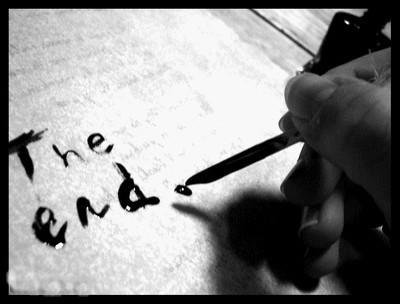I have finished chapter 16 out of 20 of my book. The last chapters are outlined. It’s time to figure out how to write the end. HELP!
 I read four articles online about writing endings. Two of them are about general writing and two are specific to Romance. You can find links to the four articles at the end of this blog. I recommend you read them all, but here are the highlights (Now we'll see how well, I put them to use)
Your beginnings will hopefully hook the reader, but your endings can bring them back for more. That last impression will stay with them.
What your Ending should be:
I read four articles online about writing endings. Two of them are about general writing and two are specific to Romance. You can find links to the four articles at the end of this blog. I recommend you read them all, but here are the highlights (Now we'll see how well, I put them to use)
Your beginnings will hopefully hook the reader, but your endings can bring them back for more. That last impression will stay with them.
What your Ending should be:
- If you are writing romance, the ending must be Happy (HEA: Happy Ever After)
- Endings are like desert. They leave your readers satisfied and happy, so they won’t feel cheated or that they wasted their time reading your book.
- Make the endings satisfying enough to make up for the depths to which you dragged your characters earlier. Match the emotional intensity of your conflict to that of your conclusion.
- Tie up loose ends. Resolve the conflict.
- Know what your ending is going to be from the beginning, so it uses the emotions, personalities, etc. of the characters, as they already exist or as they have developed during the story.
- Don’t explain, including letting characters explain to each other. Show, don’t tell.
- Make that last line really special. “Tomorrow is another day.” Endings do not have to illustrate a moral, but they can if you want them to. Sometimes they can tie up the overriding theme of the story. Here are some suggestions for last lines:
What your ending should NOT be:
- Anti-climax. Don’t peak your novel too soon and run out of steam at the ending. Make the last scene the most intense and the most memorable. If the reader isn’t experiencing emotion, you haven’t done your job.
- Runaway train. Don’t catch you reader off-guard by not leading up to and setting up the end. Plan your ending and keep it in mind as you write your story. Don’t just “tack it on” at the end. The length of your ending should be proportionate to the length of your story. Try making them almost get there, then let a minor conflict drag out the satisfying climax (Like I always say, it’s like sex, folks.)
Work on timing. When should the end start? Remember that sometimes you need something to clean the palate between the main course and dessert.
- Contrived: On the other hand, don’t force your characters to follow your outline. I like outlines, but you have to let your characters grow and become themselves if they and your story are to be believable. (And sometimes you might not like what they choose to do, but deal with it.)Don’t depend on an outside force or coincidence for the change that resolves the story.
- Developmental: The same writing style might not work in every part of your story. By the end, your readers should understand your characters and their world.
Don’t introduce complex new concepts or character traits at the end. Keep it simple and emotional. Shorten your sentences.
Leave out the metaphors and new characters.
Don’t let your lovers start uttering sappy phrases that they’d never have used earlier. Keep them in character.
Don’t cheat your readers by digging up something new out of thin air. You must build to a climax. (sex again)
- Dribble out: Don’t forget to give your story an ending, or your readers will not feel they’ve gotten their money’s worth.
Epilogues: Denouement or the final comment.
- Epilogues can be good. After the climax, they leave the reader with a sense of closure, which can be enhanced by changing locale, pacing, or level of tension.
- In the romance novel, the reader needs to be assured that the couple will work everything out and stay together.
- Don’t drag it out too long. Give a quick overview of what the future holds. Show, don’t tell.
Don’t be afraid to rewrite your ending several times and ways to see which works best.

Links:
•http://www.thewritertoday.com/2009/03/pointers-on-writing-effective-endings.html
 I keep reading authors telling me that I am a writer, even if I don't have anything published, well, not fiction anyway. Actually the sofware workbooks I create sell for a lot of money, although I don't get much of it. But now I can say I'm a playwright!
I keep reading authors telling me that I am a writer, even if I don't have anything published, well, not fiction anyway. Actually the sofware workbooks I create sell for a lot of money, although I don't get much of it. But now I can say I'm a playwright! 

















